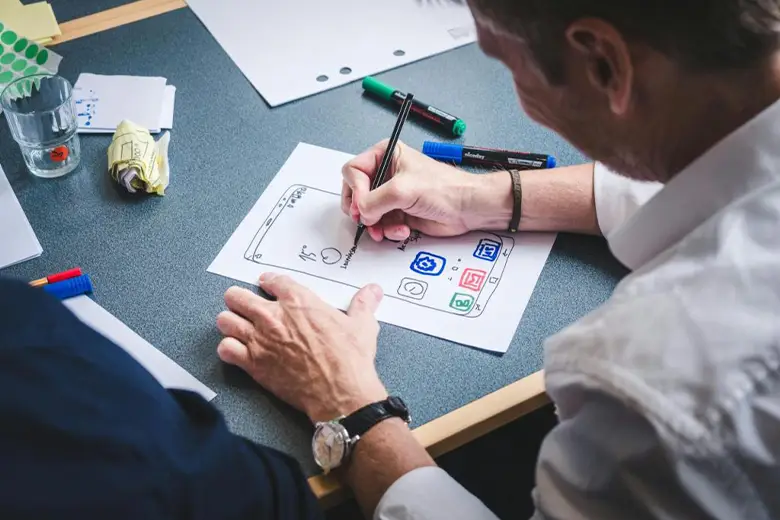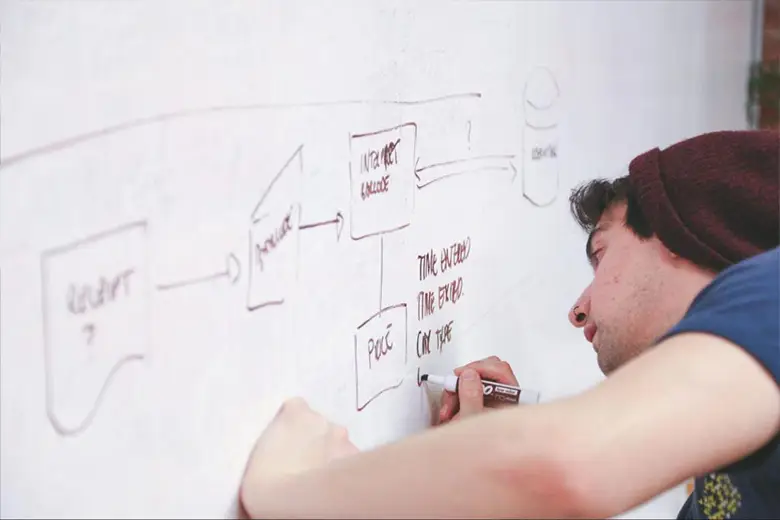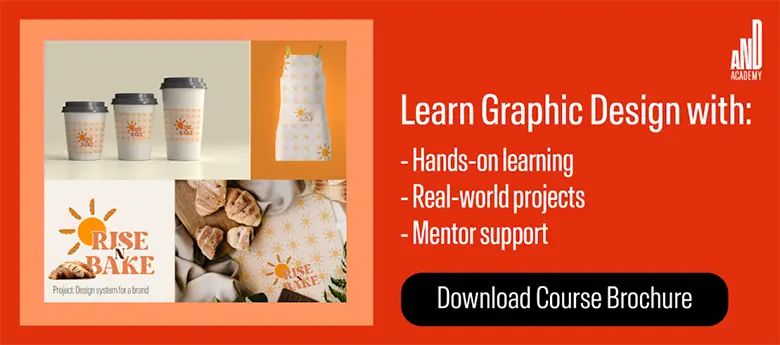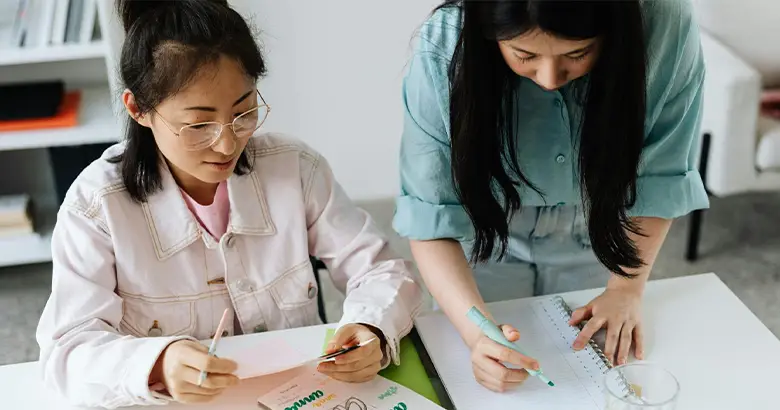Curious to know how creativity brings about innovation in the Design Thinking process? We break down its application and impact in this comprehensive guide
Creativity is central to the Design Thinking process. It generates bold ideas and solutions within an environment of user-centered innovation. More than simply a set of guidelines or principles, the Design Thinking process is a mindset that leverages creativity to help designers find out-of-the-box solutions that address real user challenges. By prioritizing creativity at every stage in the process, teams are not only better placed to truly empathize with users, but can also commit to meaningful innovation and problem-solving.
If you’d like to learn more about how you can bring creativity to your Design Thinking practice and foster innovation within your team, then read on. In this article, we’ll be exploring how creativity enhances each phase of the process and demonstrating the powerful impact it can have on developing user-centered solutions.
Contents:
- What is Design Thinking?
- Key Phases of Design Thinking
- What is the role of creativity in Design Thinking?
- Techniques for Fostering Creativity in Design Thinking
- Benefits of applying creativity in Design Thinking
- Conclusion
Ready to learn more? Then let’s get started.
What is Design Thinking?
Design Thinking refers to a human-focused approach to problem-solving and innovation that promotes empathy, creativity, and collaboration within an overall culture of experimentation. Used across numerous industries and disciplines, the method is divided into five key stages: Empathize, Define, Ideate, Prototype, and Test. With user needs, preferences, and goals at the center of all the techniques used, Design Thinking supports teams in developing solutions that are viable and effective, with the methodology often inspiring ideas that are as groundbreaking as they are successful. Thanks to its ability to foster creative thinking and produce positive outcomes for businesses and their customers, the approach is particularly popular in fields such as product design, business strategy, and social innovation.

Key Phases of Design Thinking
Let’s take a look at the key phases of Design Thinking.
1. Empathize
The Empathize stage of the Design Thinking process seeks to enhance and nurture a deep understanding among design teams and businesses of the needs and experiences of users. By conducting one-to-one interviews, observing users interacting with the product, and enabling immersive user experiences, design teams can gather valuable insights that support decision-making and lead to more effective products and services.
2. Define
The Define stage of the Design Thinking process is when insights gathered during the Empathize stage are brought together to create a clearly articulated challenge. The team then creates a well-defined problem statement that is used to lead the design process, ensuring the solutions and ideas that are thought up solve the identified user issues.
3. Ideate
The ideation phase is the brainstorming stage of the process. The team generates a range of ideas and solutions that are free of judgment or critique. There are numerous techniques that can be used here such as mind-mapping, brainstorming, and sketching which encourage free thinking and the production of creative solutions.
4. Prototype
The Prototyping stage is when the team creates low-fidelity versions, including wireframes of one or two chosen ideas from the previous stage. The quality of prototypes can vary widely. Some choose to create simple sketches while others might build fully interactive digital mockups. Whichever level of fidelity is chosen, the goal here is to enable fast iteration and further exploration of solutions.
5. Test
Finally, we come to the last stage in the process, the Testing stage. Using the prototypes that have been created, the team tests them with real users, observing their behavior and gathering their opinions. This stage is iterative. This means that any insights that are collected are used to refine the prototype and improve the user’s experience with it, with the process being repeated as many times as necessary.

What is the role of creativity in each Design Thinking stage?
Creativity is at the heart of Design Thinking, promoting and facilitating innovation and ideation. During the process, a creative approach helps teams to produce new ideas, reframe challenges, and discover new and novel solutions that are both centered around the user and highly applicable.
Let’s break down the role of creativity in Design Thinking and how it works in each stage of the process.
1. Empathize Stage
A creative approach significantly enhances the Empathy stage in the Design Thinking process especially in UI UX design by helping designers and product managers connect more deeply with users, their needs, and challenges. The role creativity plays here is to encourage designers to think outside of what is familiar to them, to go beyond their own privileges, perspectives, and experiences, and to approach user interactions and research without assumptions or bias.
Another key way that creativity improves how designers empathize with users is in the interactions. Rather than adopting traditional interview techniques for data collection, for example, a more creative approach encourages a variety of research methods such as photo diaries, empathy maps, or even workshops. When these more flexible and varied approaches are adopted, users are more likely to express themselves in ways that feel authentic and transparent. In turn, this produces data and insights that are richer and more valuable to the project.
2. Define Stage
Creativity in the Define stage of Design Thinking helps a team have a deeper understanding of the problem at hand. Using a creative approach, the team synthesizes the insights gathered during the previous stage into a problem statement that is clear and has meaning. A creative stance helps notice patterns and trends from the Empathize stage, connect the dots and distill the information gathered in original ways.
Creative thinking is needed at this stage to build a coherent narrative from the insights collected. Empathy maps, affinity diagrams, and storytelling techniques are all popular creative methodologies that one might use to cluster insights together and reveal patterns that might otherwise remain hidden. This helps them to better define the core problem or user challenge–the central goal at this stage. With a well-defined, actionable problem statement, the team is in a much stronger position to move forward to the next stages of the Design Thinking process.

3. Ideate Stage
Creativity encourages ideas that go beyond conventional thinking or traditional approaches. In the ideation phase of the Design Thinking process, this is often achieved through techniques such as mind mapping and brainstorming. These methods don’t just enable divergent thinking, they help teams uncover possibilities, solutions, or opportunities that are not apparent at first glance. This is because a creative approach helps teams see challenges from different angles and push the boundaries of potential solutions. Creativity promotes building a safe space for unfiltered, off-the-wall thinking. In this environment, all team members are encouraged to speak up and all voices are actively listened to. When this is done successfully, teams benefit from a more diverse range of ideas and solutions than they would in a more traditional ideation session.
Creativity also fosters collaboration between team members during this phase. When individuals are encouraged to work together, the combination of different perspectives leads to a richer pool of solutions than when team members are left to work alone. When collaboration is prioritized in this creative and non-judgemental environment, a breakthrough solution that aligns with user needs is much more likely to be found.
4. Prototyping Stage
When prototyping, creativity helps to bring abstract ideas to life in ways that are tangible and can be tested. Teams iterate on their concepts quickly during prototyping. Creativity helps at this stage as it enables team members to both visualize their solutions and improve upon their prototypes with user needs and challenges in mind.
5. Testing
Testing may seem like the least creative of all of the Design Thinking stages, but this is far from the case. Creativity is crucial here in developing effective and engaging testing methods. Designers can encourage more natural interactions with a prototype when they employ imaginative approaches. These might include:
- Role-playing scenarios
- Interactive workshops
- Storytelling-based feedback sessions
Not only do these methods provide opportunities for more authentic, and therefore more valuable, interactions with a design within context-rich scenarios, but also yield more accurate insights and clearer feedback. With these results, the design team has an array of rich resources from which to learn and work to improve their design.
Creative thinking during testing also promotes an iterative mindset. Designers no longer see testing as a one-time event, but instead use the feedback gathered to revisit, adjust, refine, and improve prototypes as many times as needed. When this iterative creativity is embraced, a design team is considerably more likely to develop a product that really meets users’ needs.

Techniques for fostering creativity in Design Thinking
Let’s run through some of the key methods used to promote and encourage creativity in the Design Thinking process.
1. Brainstorming and mind mapping
Most of us are familiar with the idea behind Brainstorming. This creative technique is typically used during the ideation stage of the Design Thinking process to help teams come up with a diverse assortment of ideas for addressing a specific user problem. The process promotes open, collaborative thinking, with each member of the team free to share their ideas without judgment, or criticism from fellow contributors. By embracing all ideas–both conventional and unconventional– the team is left with a varied pool of potential solutions that explore a range of approaches.
Mind mapping involves placing a theme or idea at the center of a whiteboard or large piece of paper with branches extended outwards to represent related themes, potential solutions, or insights. Sub-branches can be added too, where necessary. The resulting mind map becomes a visual representation of interconnected ideas. The goal behind mind mapping is to support teams in exploring ideas in a structured way, discovering patterns and trends, and revealing a holistic view of the challenge at hand. This final picture leads to a sharper understanding of the challenge and more innovative solutions that clearly address the core nature of the problem.
2. Divergent and convergent thinking
Used to explore and refine ideas, divergent and convergent thinking are thought processes common to different phases of the Design Thinking process.
Divergent thinking refers to the generation of a wide range of innovative and “wild” ideas without judgment or critique, with designers encouraged to think outside the box and from different perspectives. The process promotes the creative exploration of ideas and brainstorming. The objective of divergent thinking is to increase the scope of ideas produced and bring about more unconventional ideas and solutions, encouraging designers to go beyond traditional or obvious solutions.
Convergent thinking differs from divergent thinking in that rather than encouraging the conception of as many ideas as possible, it instead promotes the selection, refinement, and evaluation of the most viable ones. While divergent thinking tends to be used in the earlier phases of the Design Thinking process, convergent thinking is more commonly used in later phases, such as Define, prototyping, and testing. This thought process brings structure and feasibility into the equation, guiding teams towards prioritizing ideas based on how practical they are to apply, the user’s needs, and how well they align and solve the problem statement. A convergent thinking approach leads to a smaller selection of ideas that are highly actionable, and meaningful, and lead to user-centered solutions.
3. Role-playing and scenario building
Role-playing and scenario-building are creative techniques that help teams visualize their ideas and solutions in a real-world context to assess their viability. Role-playing encourages teams to act out different user interactions or situations related to the challenge, with team members typically taking on the roles of different users. This can be especially helpful during the Empathize and Test stages of the Design Thinking process. When designers walk in the shoes of users and gain deeper insights and understanding around their pain points and emotional needs they are in a stronger position to create products that really solve user problems. In comparison to standard interviews or surveys, role-playing can reveal insights into user behavior that might not otherwise come to light.
Scenario building refers to writing detailed narratives or crafting hypothetical situations that clearly illustrate how a user might use a product or service within a defined context. This technique is usually adopted during the Define, Ideate, and even Prototype stages of the Design Thinking process as it supports the process of identifying potential product or user issues and exploring which solutions best meet different challenges. Some design teams choose to play out “what-if” situations. This approach facilitates thinking through a solution’s entire functionality and the user experience in different environments or for different use cases.

Benefits of applying creativity in Design Thinking
Read on for a walkthrough of the key reasons why businesses are increasingly fostering creativity in the Design Thinking process.
1. Generates unique, user-centered solutions
As we’ve seen, design teams are encouraged to explore a significantly wider range of ideas and solutions when creativity is prioritized during the Design Thinking process. When so many diverse ideas are explored, the team is more likely to uncover and develop meaningful solutions that truly meet user needs.
2. Encourages agile problem-solving
At the heart of all creative processes lies flexibility and adaptability, both essential to responding to new insights and feedback during iteration in design processes. This agile approach helps to cultivate an environment in which teams can rework and refine their ideas continuously, putting them in a strong position to respond and adapt when challenges arise.
3. Nurtures a culture of innovation
Creativity helps to cultivate an environment in which experimentation and fresh ideas are welcomed. In such a workspace, team members are more likely to feel secure in pushing boundaries, innovating, and trying out new solutions. When this is the case, both users and organizations benefit from more innovative breakthroughs.
4. Fosters competitive advantage
Creative approaches foster more innovative solutions. This in turn helps businesses to differentiate themselves from their competitors. They are able to create more unique and exciting products that truly resonate with users. This makes the user experience more fun, as well as rewarding, helping organizations to gain a competitive edge.
For a deeper understanding of how applying Design Thinking benefits designers, check out this Task-Based Application project by AND learner, Shantanu Pathak.
Conclusion
We hope you’ve enjoyed our guide to the role of creativity in the Design Thinking process.
As we’ve seen, creativity is central to this methodology. A creative approach ensures that a design team can push past conventional limitations and produce innovative solutions that truly address the real-world challenges and pain points of users. At every stage of the Design Thinking process, creativity enhances results. From enabling teams to walk in the shoes of their users and feel a deeper connection to them during the Empathize phase to creating agile, flexible, and adaptable prototypes that can be swiftly iterated on during the Prototype phase, the benefits of creativity are clear in every step in the process.
With individuals, businesses, and entire industries increasingly adopting Design Thinking to address complex user challenges, cultivating environments that embrace creativity within this framework will be crucial for innovation and attracting and retaining users.
If you’d like to learn more about Design Thinking, head back to the AND Academy blog for more design articles like this one.
Next Steps
We hope our comprehensive guide on the role and impact of creative design thinking has provided you with a clearer understanding of how it drives innovation and improves products and services.
If you are interested in learning more about the field of user experience design, where design thinking is applied very heavily, here are some of the resources you might find useful:
- Watch this session by Shiva Viswanathan, Design Head of Ogilvy Pennywise, and Naman Singh, Product Experience Designer at RED.
- Talk to a course advisor to discuss how you can transform your career with one of our courses.
- Pursue our UX UI Design courses – all courses are taught through live, interactive classes by industry experts, and some even offer a Job Guarantee.
- Take advantage of the scholarship and funding options that come with our courses to overcome any financial hurdle on the path of your career transformation.
Note: All information and/or data from external sources is believed to be accurate as of the date of publication.









